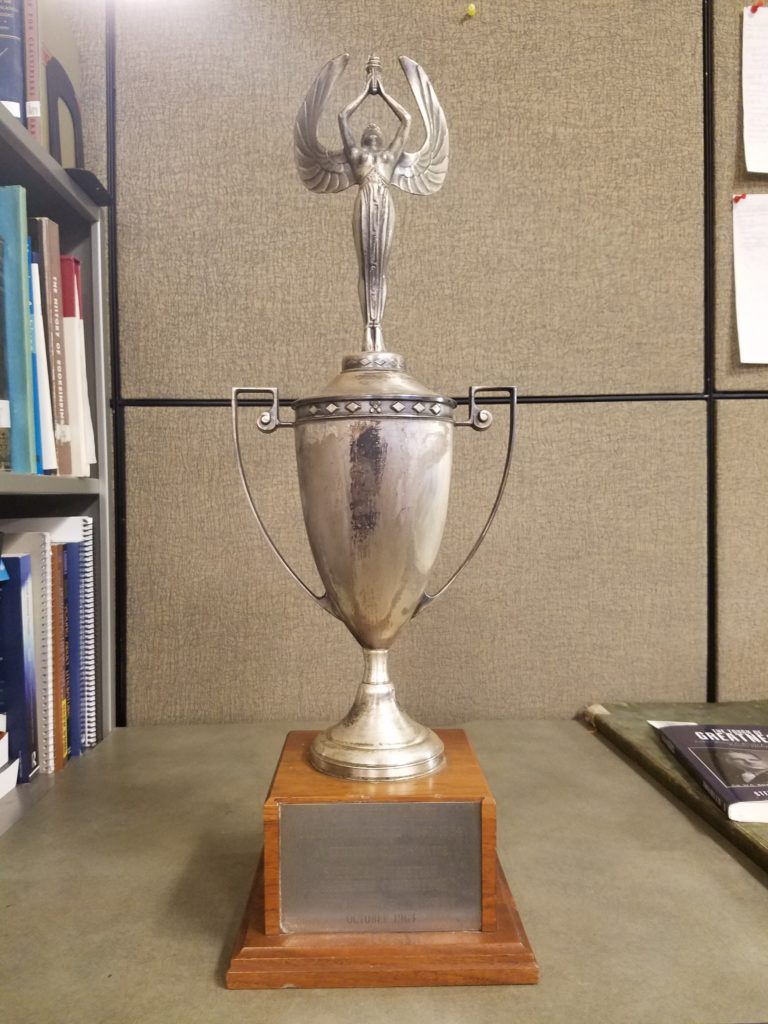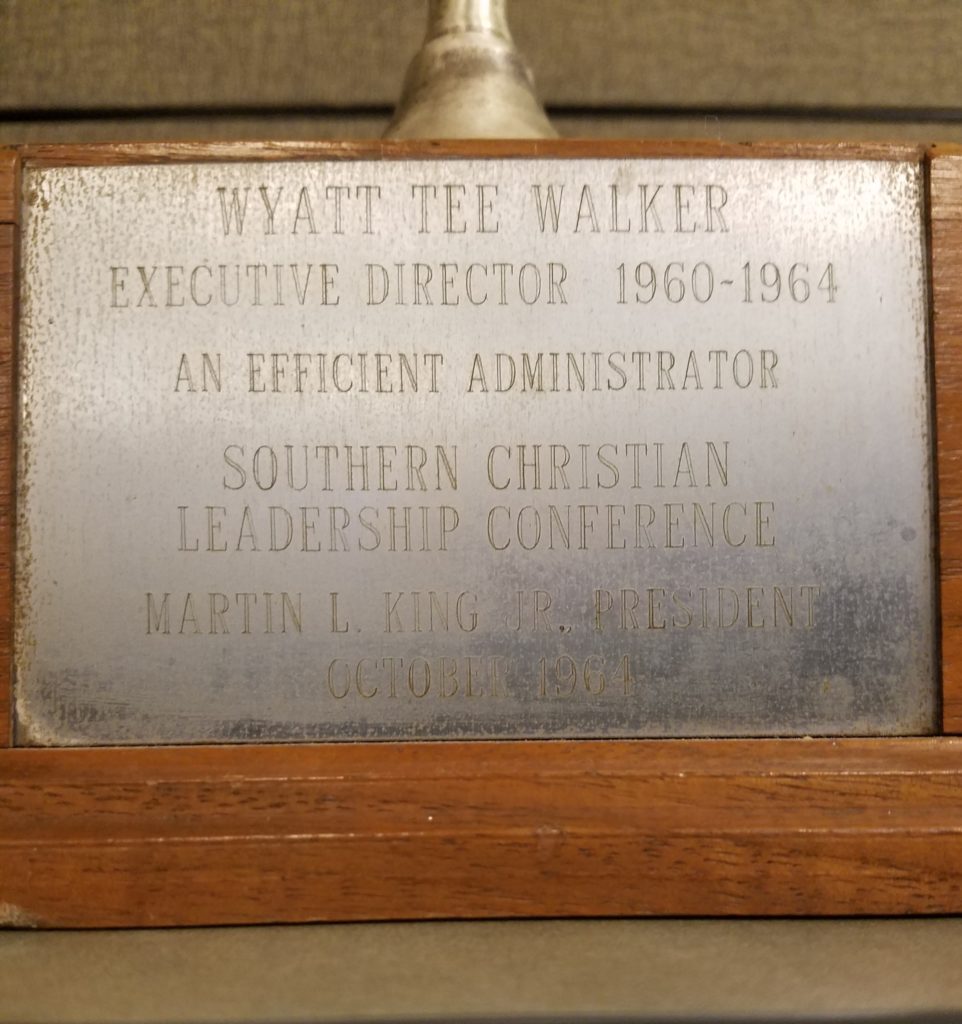(Note: This post was authored by Taylor McNeilly, Processing & Reference Archivist.) One of the reasons why Dr. Walker and his wife decided to donate their papers and create the Dr. and Mrs. Wyatt Tee Walker Collection was to promote education and the collection’s use in classes. Knowing this, we’ve done our best to incorporate portions of the collection into course instruction as much as possible. I taught a course session last Saturday and included two items from the Walker Collection, one of which spurred an in-depth and interesting discussion among the students about archives and archival practice. This week’s #WyattWalkerWednesday post will focus on that discussion.
You can probably guess what this discussion was about, given the title of this blog entry. The class this past Saturday came in for a brief, 1.5-hour introduction to the Rare Book Room and what we do as part of Boatwright Library. This of course includes providing reference about and access to our rare book collection, as well as the special collections that the Walker Collection is part of. One of the items from the Walker Collection that I included to show off to the students was a recently donated award, pictured below. As you can see, the plaque is dull and difficult to read, while the trophy portion is heavily tarnished in places.
One of the students asked a seemingly simple question: would I polish the award before putting it on display somewhere? Little did this poor student know that archival guidelines almost always come down to two words: it depends. Instead of giving the class that as a reply, I asked them: what are the pros and cons of polishing the award?
The most obvious benefit, of course, is not just aesthetics but legibility: not only would the trophy portion look much more impressive if polished, but the plaque is very difficult to read from almost any angle and could benefit from a good cleaning. Beyond these, the class had difficulty coming up with reasons to polish the award. Where the discussion really got interesting was when they turned their attention to what might be lost if the award was polished.
I had already introduced to the class the idea that there are different types of information. The most basic type is that which is written down in a document: the words on a page, or the inscription on an award. However, the physical object itself can hold intrinsic information. This information could be locating the source of the paper based on its unique makeup, or how the item has been used based on its general appearance. Paper with stains on it, for example, can tell us what the writer – or previous readers – did near the document. Similarly, an award with heavy tarnish tells us that the owner didn’t polish it regularly.
The basic fact that Dr. Walker didn’t polish this award may not seem like much of a revelation, but it begs the question: why not? This award is recognition of some of the most influential behind-the-scenes work of the 1960s Civil Rights Movement, wherein Dr. Walker planned not just Project C in Birmingham, but also the March on Washington. Dr. Walker’s organization and strategy while executive director directly influenced American life, including the Civil Rights Act of 1964. Why would he take an award recognizing all that and leave it to tarnish?
The class had a variety of reasons that might explain this behavior. Some, such as “He clearly cared more about doing the work than looking back at past accomplishments,” certainly fit with who Dr. Walker seems to have been as a person – always moving forward, always tackling new problems in society. Other students posed other reasons. Maybe he didn’t like to display awards. One student asked if Dr. Walker had displayed any awards in his home. I replied that there was a glass bookcase full of awards, photos, and other memorabilia when I visited the home. Another student chimed in: “Well, what kind of awards were in the display case?” And so the discussion continued. Maybe Dr. Walker displayed awards that were easily maintained, those made of glass or other materials that needed dusting but not polishing. Maybe he was prouder of more recent accomplishments: he had so many awards that he only displayed the newest ones.
Since I am not Dr. Walker, I cannot give a definitive answer to the question of why this award was left to tarnish. Nor could I end this discussion in any meaningful way for the students, except to point out that the entire discussion could not have happened if I polished the award. And that seemed to be a good enough answer for the class.
As always, please check back again next week for another #WyattWalkerWednesday post to keep informed of things going on with the collection. Feel free to leave a comment explaining how you feel about polishing archival material in our collections, too! And don’t forget to follow us on Facebook, Instagram, and Twitter for more library updates.


